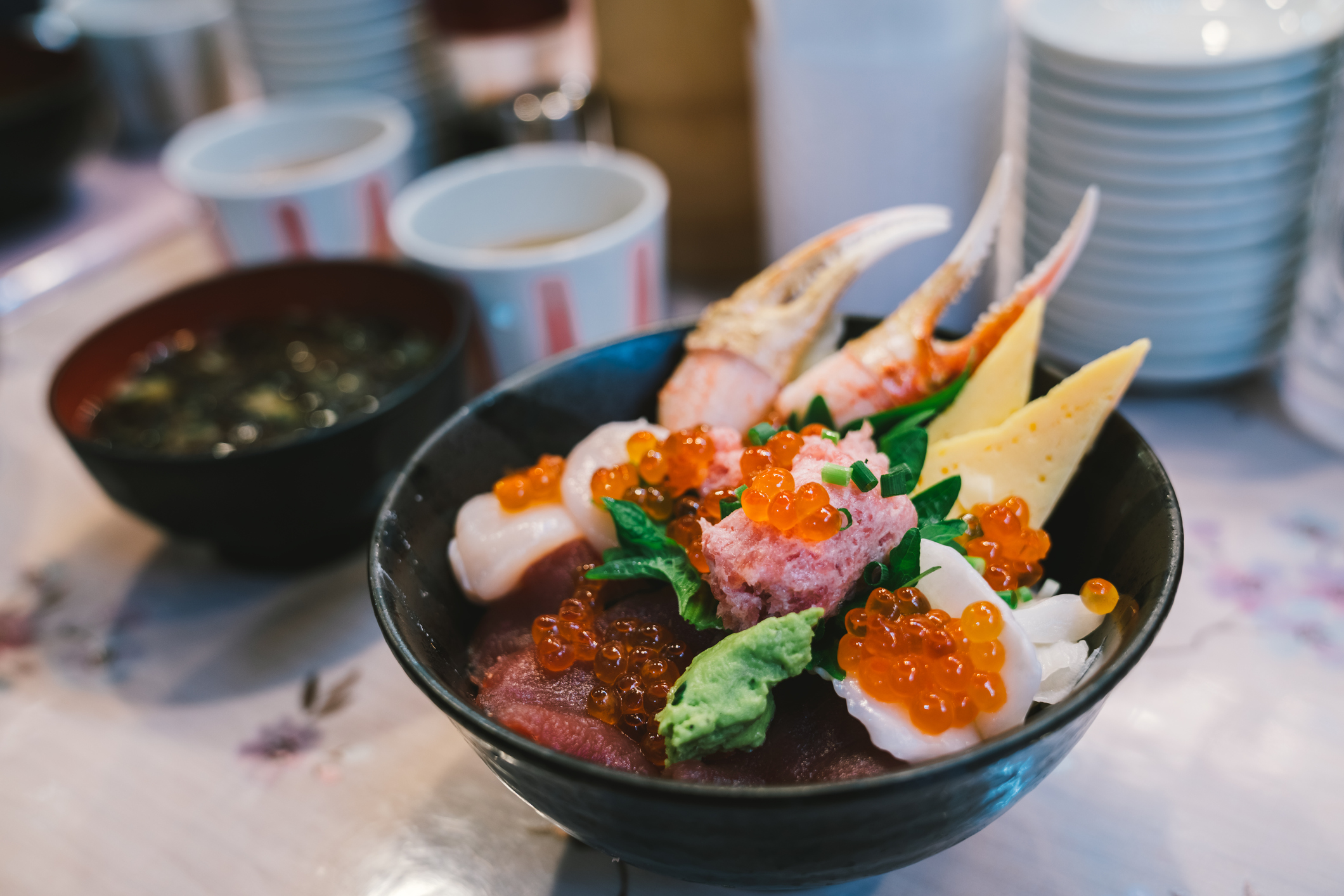
Booming numbers of foreign visitors to Japan are driving up prices at restaurants near tourist spots, as a weaker yen makes the country a bargain destination and local wages struggle to keep up with a broader rise in costs.
Emblematic of this is the ¥6,980 ($46.52) sashimi-topped rice bowl at Toyosu Senkyaku Banrai, a new retail complex in Tokyo’s Toyosu area. It’s made with fresh seafood from the adjacent fish market, which was moved from the famed Tsukiji auction building in 2018. A similar kaisen-don meal, made with slightly lower quality ingredients, can be had for ¥1,000 to ¥1,500 in other parts of the city.
In January, 2.69 million people visited the country, up 80% from a year earlier and on par with pre-pandemic levels, Japan’s National Tourism Organization said Wednesday.
Earlier this month, the yen slipped past 150 to the dollar, putting the currency close to levels last seen in 1990 and making Japan an affordable destination for Americans and people from countries with stronger currencies. That, in turn, has helped to fuel a post-pandemic tourism boom, with hotels, restaurants and other retail businesses struggling to keep up with demand. But so far, domestic wages haven’t kept up and the economy tipped into a technical recession at the end of 2023.
“Income gains haven’t been able to keep up with rising prices,” said Atsushi Takeda, chief economist at Itochu Research Institute Inc. Even so, he said there’s a chance that rising prices will finally force consumers to seek higher wages and change spending habits.
Spending by visitors totaled a record ¥5.3 trillion in 2023, up by roughly 10% compared with the tally in 2019, before the pandemic, while spending per person increased by almost 34% to ¥212,000, data from the Japan Tourism Agency showed last month. Japan saw 25 million tourists in 2023, the largest number since 2019, when the country had 32 million inbound visitors.
Reflecting the spending power of this influx are other menu items going for eye-watering prices for locals. At the Niseko Tokyu Grand Hirafu ski resort in Hokkaido, Japan’s northernmost island, an eel rice bowl goes for ¥3,500 and one made with yakitori chicken skewers costs ¥2,000, at a food truck.
“I have to sell at these prices to cover costs,” said proprietor Naoya Hayakawa, adding that 95% of his customers are from overseas.
Visitors to Japan are seeking an experience that they can’t get at home, creating an opportunity for Japan’s food and beverage retailers to raise prices as much as 50% without denting demand, according to Lu Dong, founder of TakeMe Co., a payment and restaurant-reservation service.
Read More: Japan Is Releasing Wastewater Into the Pacific: What to Know About Radioactivity and Seafood
He advised a restaurant in Osaka to create a course menu catering to foreign visitors at a price point of more than ¥20,000. That boosted spending by tourists, said the shop’s chief, Yugo Fujimoto.
At the Toyosu retail complex, which combines restaurants, souvenir shops and spa facilities, 60%-70% of the long line at Edo Tsujiya, seller of the pricey seafood rice bowls, are tourists. Although they prepare around 300 meals daily, some items are often sold out by 2 p.m.
One of the customers, Alex Goldman, said that it would be impossible to get the same quality food at the same price in Chicago, where he’s from.
“I can only get this here,” he said as he tucked into the dish. “I want to come again.”
More Must-Reads from TIME
- Donald Trump Is TIME's 2024 Person of the Year
- Why We Chose Trump as Person of the Year
- Is Intermittent Fasting Good or Bad for You?
- The 100 Must-Read Books of 2024
- The 20 Best Christmas TV Episodes
- Column: If Optimism Feels Ridiculous Now, Try Hope
- The Future of Climate Action Is Trade Policy
- Merle Bombardieri Is Helping People Make the Baby Decision
Contact us at letters@time.com